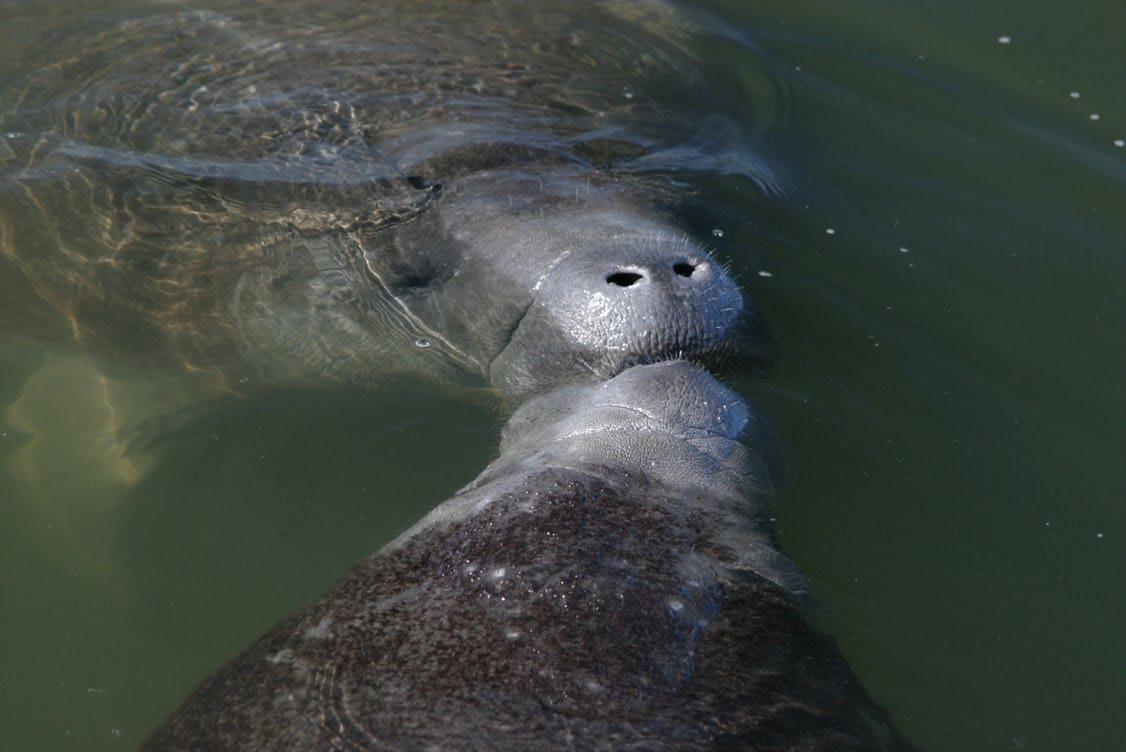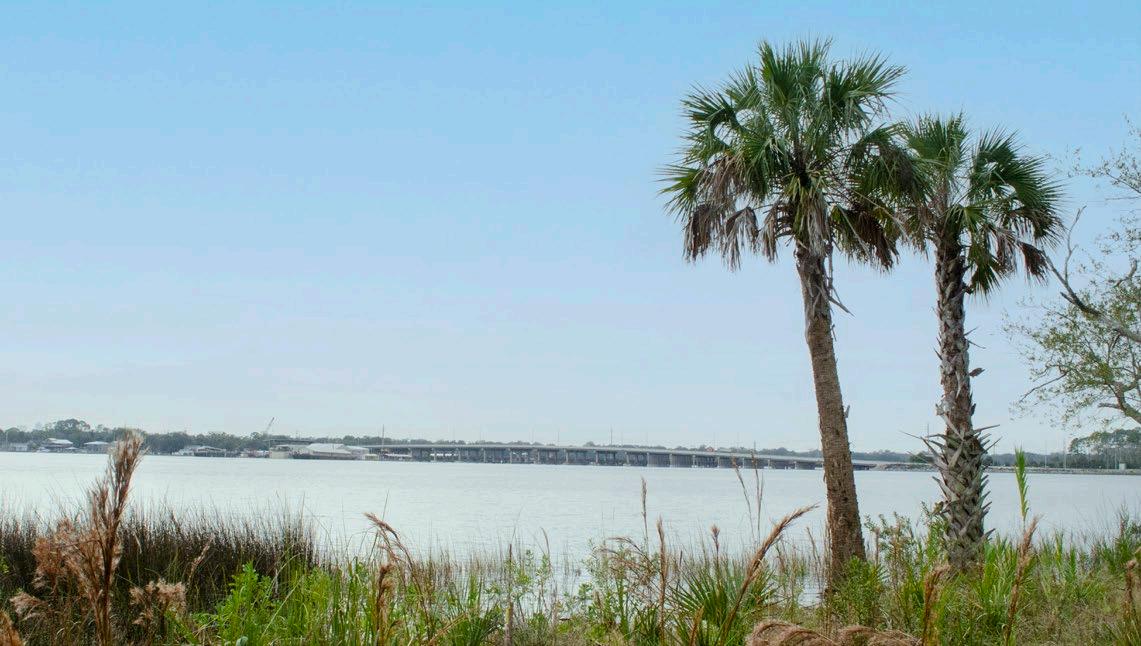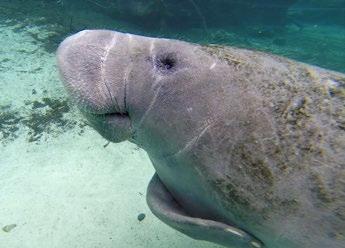
2 minute read
Conservation: Saving Florida’s Pristine Waters and Unique Wildlife
A Critical Winter for the Florida Manatee
By Fátima Ramis, Assistant Curator of Conservation
Advertisement

Florida’s friendly giants spend the year traveling throughout the state and along the coast of the U.S., from Texas to New England and can even make it as far south as Cuba. However, when water temperatures decrease to 68 degrees Fahrenheit or below, manatees need to have daily access to warm water refuges found in our state. These warm water pockets are places in which hundreds of manatees gather and rest throughout the winter months, when they’re not making daily runs to feed in the cold waters nearby. However, over the last few decades, multiple stresses have been placed on some of these ecological communities, depleting nutritional resources to manatees and many other species.
View of Trout River from River View Gardens

The Indian River Lagoon (IRL), a 156-mile estuary, is a critical winter habitat for manatees, that has experienced a progressive loss of seagrass precipitated by algae blooms, which occur due to an excess of nutrients in our water systems. These excessive nutrients originate from our own use of fertilizers and waste and inevitably end up in our water systems. The IRL is so important because one of the largest congregations of manatees takes place at a power plant discharge toward the northern end, with numbers known to exceed two thousand.


2021 was a record-breaking year for manatee mortalities across the state of Florida, with more than one thousand deaths, the majority taking place and being attributed to reduction in food availability in the IRL. This is about 12 percent of their estimated population. The crisis experienced by manatees is a symptom of the issues Florida waters are currently facing. Seagrass does not just feed manatees; it is vital to the health of our coastal ecological communities and our economy.
This year, $8 million dollars was appropriated for seagrass habitat restoration by law makers. However, this issue will not be resolved overnight; it is expected that 2022 will also be difficult. Therefore, on December 2, 2021, the U.S. Fish & Wildlife Service (FWS) and Florida Fish and Wildlife Conservation Commission (FWC) made the unprecedented decision to experimentally provide supplemental feeding to manatees in the northern IRL, where large numbers of manatees normally gather throughout the winter months. This enormous and complicated effort will be matched by an increase in the collective capacity for the Manatee Rescue & Rehabilitation Partnership to rehabilitate manatees in need. Your zoo serves as a key acute care facility, being the only one in Northeast Florida.

Please remember that feeding and interacting with manatees continues to be illegal. If you spend time near the water and encounter a distressed manatee, please report it to the Florida Fish and Wildlife Conservation Commission’s wildlife alert hotline: (888) 404-FWCC (3922).

Video: Prevent Manatee Mortalities, June 2021
Watch Craig Miller's discussion on manatees. Craig also appears on page 2 and page 51.










